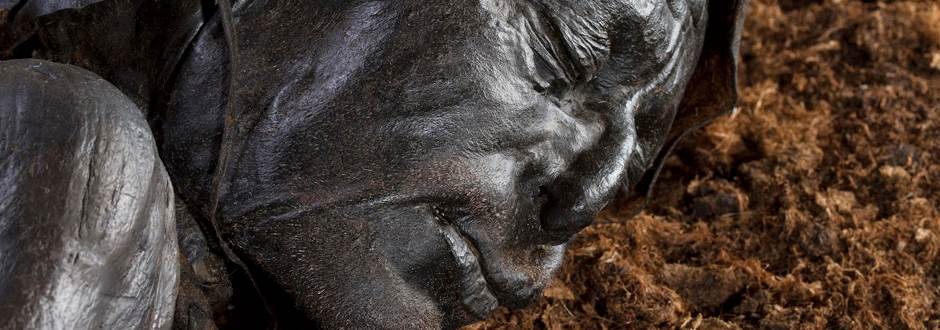Why did Tollund Man have to die?
We know how Tollund Man died. He died by hanging one winter’s day or early spring. Shortly after the hanging he was cut down. Somebody closed his eyes and mouth and placed him in a sleeping position in an old bog. But why he was hanged is much harder to tell. Was Tollund Man a criminal? Did somebody want to get rid of him and thus hung him? Did he commit suicide or was he a sacrifice to a god in order to keep the god satisfied? We have no written materials from the period of time in which Tollund Man lived but the Roman Empire in Italy had people who could both read and write during this time. One of them was Cornelius Tacitus, who wrote down narratives told by traders who visited Northern Europe. The traders told about the wild tribal peoples living to the North.
Somebody cut down Tollund Man, put him in a sleeping position, closed his mouth and eyes and placed him at the bottom of a bog, presumably only wearing a belt, a cap and the rope in which he was hanged. Photo Lennart Larsen
Among other things, Tacitus wrote, “traitors and renegades hang in those trees, cowards, gutless and unnatural fornicators are pressed down under a wicker hurdle into the slimy mud of a bog”. Another place Tacitus writes that a Germanic tribe, the Semnones (settled in Northern Germany) sacrificed people. Both narratives are in accordance with Tollund Man as well as many of the other bog bodies, although Tacitus wrote his narrative app. 400 years after Tollund Man was dead. If any of Tacitus narratives would fit Tollund Man, it would have to be the last. One thing is clear – Tollund Man’s peers could not have been enemies – despite them hanging him! It is hard to imagine they would have carried him into the bog and carefully placed him in the sleeping position in which he was found if they had considered him a common criminal. Additionally several forensic examiners believe it’s highly likely that they also closed his eyes and mouth. All this considering, the most probable explanation is that he was sacrificed to a god/gods. We don’t know what god he was a sacrifice to. But the existence of bog bodies in Denmark and the fact that they appear in areas where people used to dig for peat in the Iron Age leads us to speculate that the bodies are actual sacrifices of thanks to the god made in return for the peat that was dug from the god’s bog. Or it could be that he has been sacrificed in the winter in order to ask the gods for spring to come, bringing growth and warmth. His last meal consisted of a porridge or gruel made of seeds and grains – something that may very well have been the typical diet during winter when the meat stock and most of everything else has run out.






Follow us here: